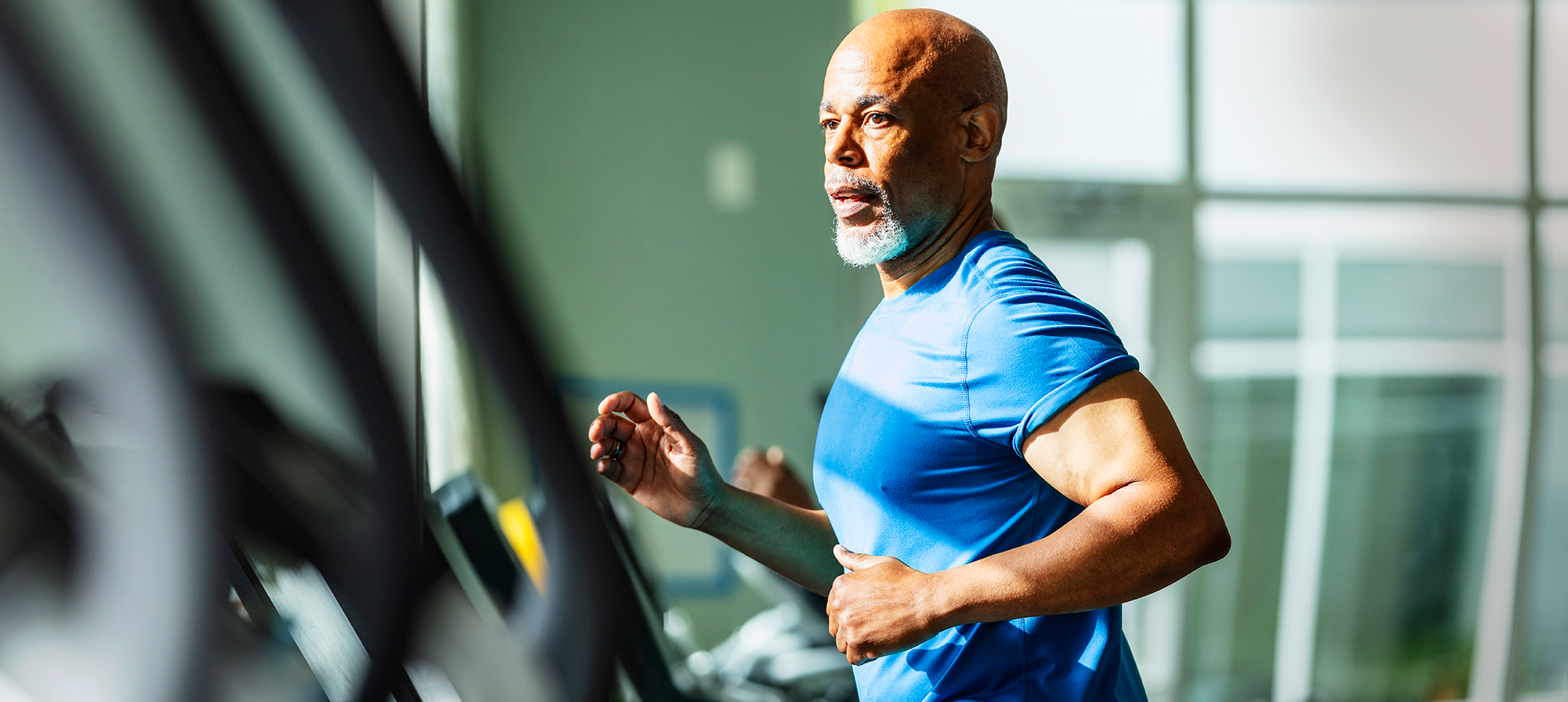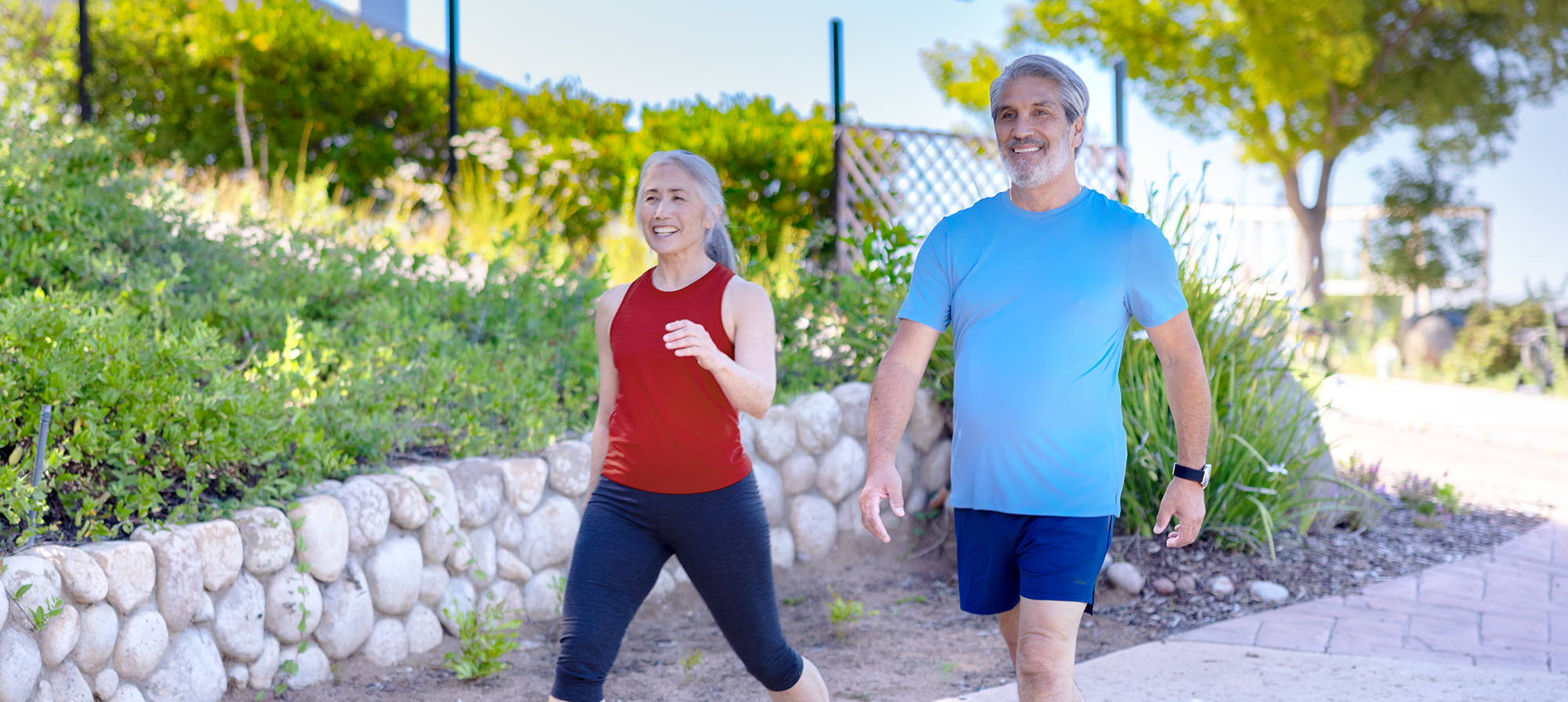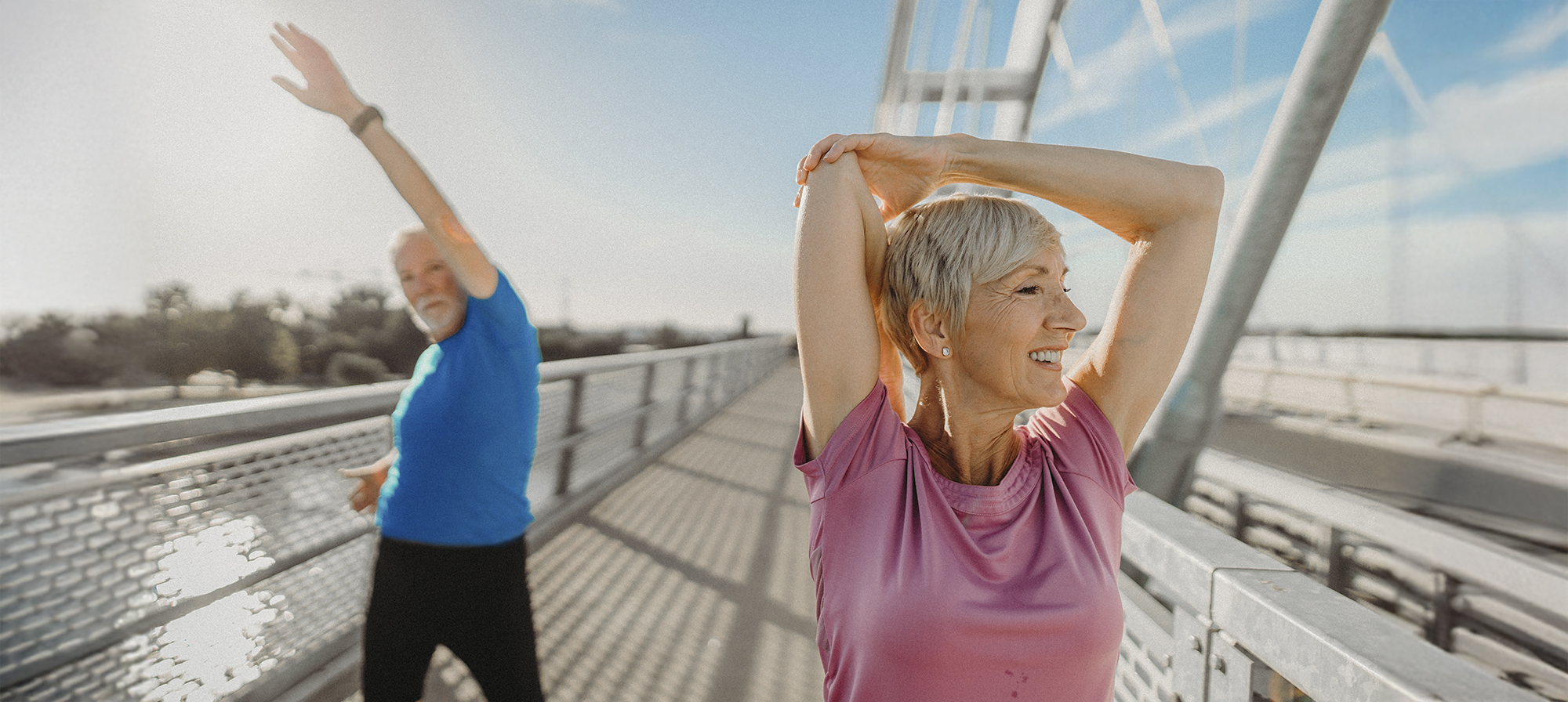Proprioception is your body's ability to sense its movements and location in space, so you can move freely and safely without having to think about it.
Proprioception is sometimes called "body awareness." It’s like a 6th sense of sorts—in addition to seeing, feeling, hearing, tasting, and smelling. It allows your body to perceive where it is and how it’s moving in your space, relative to other objects. This sense allows you to do things like touch your finger to your nose with your eyes closed or walk on an uneven surface without falling. It also allows you to maintain stable posture.
Also called kinesthesia, proprioception is responsible for your motor coordination, balance, and even stable posture—whether you’re standing, sitting, walking, getting dressed, doing chores, working out, or moving in any other way. Without this skill, you would be unable to move well or interact with your environment in a safe or functional way.
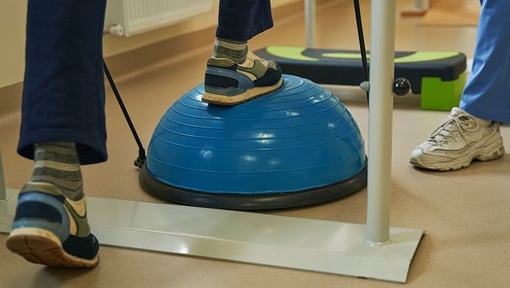
You’ve got to work on your proprioception to keep it functioning well
Your proprioceptive skills can wane due to aging, surgery, injury, or disease. In turn, this can worsen your balance and motor control, increasing your risk of falls. But you can take steps to help maintain and even improve your proprioceptive skills—no matter your age.
Proprioceptive training is one way to do this. Training your proprioception can improve your balance, gait, control of body movements, and functional mobility. This can lower your risk of falls, helping ensure that you live a healthy and independent life for years to come.
Let’s take a closer look at how proprioception works, and then move onto some training and exercise videos that can help you keep it sharp.
The proprioceptive system
Your body has sensory receptors in your joints, muscles, tendons, and skin that send signals to your brain, telling it where your body is in space and how it’s moving. It also tells your brain the speed and force of your movements.
Your brain interprets these signals and then sends other signals back to your muscles via the motor nerves of your body and limbs. This constant feedback loop helps you sense and subconsciously adjust your body’s movements, along with the speed and force of them. It also tells you where objects are in relation to your body.
This feedback loop helps keep your body from bumping into walls, furniture, or other objects. It allows you to extend your arm and hand to exactly where your cup of coffee sits on the table. It allows you to lift a forkful of food to your mouth and not miss. It tells you whether your feet are in contact with pavement, sand, or grass when you’re walking. And it helps you right yourself if you get off balance.
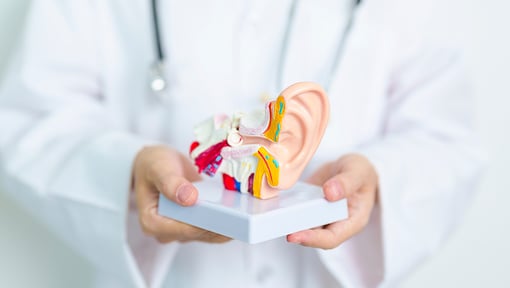
How your vision and the vestibular system also play a role
The vestibular system consists of structures within the inner ear, including tiny, hair-like sensory receptors. These inner ear receptors sense the movement and position of your head in relation to your body. They then send signals to the brain with this information.
These vestibular system signals tell your brain whether your body is balanced. They also tell your brain whether you need to change the speed or direction of your movements. In this way, the vestibular system plays a part in helping you keep your balance. And it does this by triggering your reflexes so you can adjust your movements to stay on your feet.
These are called your righting reflexes, and they’re what give you the ability to react and move quickly when something throws you off balance. Let’s say you trip and start to fall. Your righting reflexes help you catch and regain your balance. Your vestibular system is, in part, responsible for this ability.
The vestibular system works in sync with both your vision and your proprioceptive system to further hone your sense of balance, movement, and the orientation of your body.
Your vision allows you to see objects in your environment that you either need to reach for, pick up, manipulate, or avoid. These instantaneous signals to your brain about what you’re seeing around you help inform your proprioception. It allows your brain to plan your body’s movements.
Your vision also plays a role in helping you maintain your balance and posture, whether you’re standing still or moving. If you’ve ever gotten out of bed in the pitch dark, you’ve likely experienced a sense of disorientation and a lack of balance.

What can cause problems with proprioception?
As you age, or if you are sedentary and inactive, the signals that travel through your proprioceptive feedback loop tend to slow down. This, coupled with changes in the brain and the rest of your nervous system, as well as alterations of muscle structure and function, can impair your proprioception. This loss of muscle strength can also impair your proprioception.
Many health conditions can also affect proprioception, including:
- Brain injuries
- Spinal cord injuries (including a herniated disc)
- Parkinson’s disease
- Multiple sclerosis
- Amyotrophic lateral sclerosis, or ALS (Lou Gehrig’s disease)
- Huntington disease
- Spinocerebellar ataxia type 3 (SCA3)
- Stroke
- Peripheral neuropathy
- Joint injuries or instability (especially a sprained ankle or knee)
- Hip or knee replacement
The good news is that doing proprioceptive training exercises, like the ones in this article, can help slow declines caused by age and certain health conditions. And this kind of training can also help you regain some of the proprioceptive abilities you’ve lost.
Signs to watch out for
Some signs that your proprioception has weakened can include trouble:
- With your gait (how well you walk).
- Keeping your balance, especially when walking on uneven ground.
- Coordinating the movements of your arms and legs.
- Handling objects.
- Judging how much force you need when picking up an object.
If you notice one or more of these signs, reach out to your doctor. They can do several tests to evaluate your proprioception and/or refer you to a physical therapist (PT). A PT can also give you specific exercises to help regain some of your lost abilities.
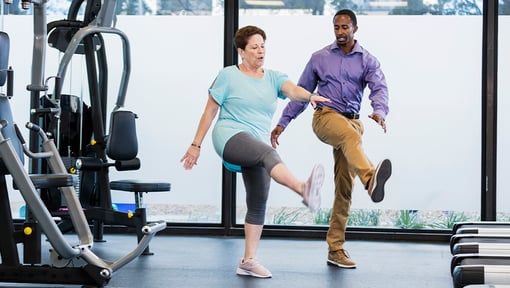
Proprioception training to help keep this 6th sense strong
Several studies with older adults (of various stages of health) have demonstrated big improvements in functional mobility, balance, gait, and risk of falls after engaging in proprioception training exercises.
Your doctor may recommend you work with a PT before beginning a proprioception training routine. Or, if your doctor gives you the OK, you can do proprioceptive strengthening exercises on your own.
Let’s take a closer look at some of the different options you might want to try—or which ones your PT may recommend.
- Balance training. You’ve likely practiced standing on one foot. Or you’ve probably tried to walk heel to toe as if you were on a balance beam. Those are traditional balance training exercises that help you boost your proprioception and learn to maintain your balance.
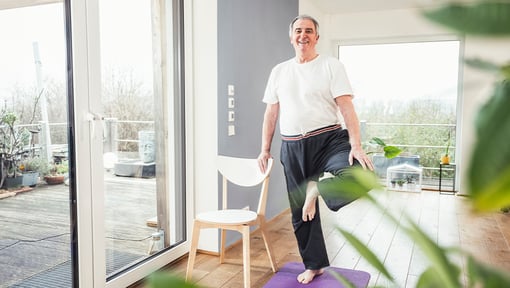
Think about a time when you stood on one foot. Did you notice all the tiny, rapid movements your ankle, foot, and lower leg muscles constantly made to help keep you on that one foot? Did you also notice that you weren’t consciously making these tiny, adjustment-like movements? This is your proprioceptive system in action, and it’s what makes balance training such an effective way to keep this skill strong.
You can do these kinds of exercises to improve your balance with or without a physical therapist. As your balance improves, you can make certain exercises more challenging by doing them with your eyes closed. Just make sure you have a stable chair, wall, or countertop to help keep you on your feet if you try them with your eyes closed.
- Perturbation-based balance training (PBT). PBT is a bit different than traditional balance training in that it teaches you to regain, rather than maintain, your balance. PBT often involves trying to keep your balance while someone or something challenges it.
These challenges are known as perturbations. They are meant to be random and unexpected. A physical therapist, for example, may gently push you as you stand on one foot. Or you might try to keep your balance on an unstable surface, such as a balance board.
PBT mimics those unexpected, real-life events that throw you off balance and which you are unable to foresee. Like when you’ve slipped on a patch of ice. Or someone bumps into you in a crowd. You might have caught your foot on uneven pavement. The goal is to develop your reactive balance for such events. And strengthening your proprioception with PBT exercises can help you do that.
- Walking on uneven surfaces. You can strengthen your ankle proprioception simply by walking on uneven ground—as long as it’s safe for you to do so. That means as long as you aren’t recovering from an ankle or knee injury that might raise your risk of a fall or twisted ankle when walking on uneven turf.
But if your ankles are injury-free and stable enough, and you don’t have problems with your balance, think about taking your walking routine to the beach, a grassy park, or even to some hiking trails. Walking on uneven ground works your ankles and lower legs a little harder than walking on a smooth surface does. This can help keep your proprioception strong. 
5 exercise videos to help boost your proprioception
The links below will take you to a series of 5 videos with individual exercises to help improve your proprioception.
These exercises are best done with bare feet. You can do all exercises in one session, 3 to 4 times per week, or even daily. Do each activity 3x for 30 seconds each.
- Balance Feet Together, Eyes Closed
- Balance Single-Leg Stance Supported and Unsupported
- Tandem Stance
- Tandem Walking and Balance
- Standing Y Balance
It’s important not to take your proprioception for granted. You can see the critical role it plays in balance, mobility, lowering risk of falls, and the day-to-day body movements you need in your daily life. If you’ve noticed a drop in your proprioceptive abilities, talk with your doctor right away about what you can do to regain them.
Not a Silver&Fit® member? Learn more about everything the program has to offer, including more helpful healthy living tips like this, here on our website.
This information is not intended to take the place of regular medical care or advice. Please check with your doctor before using this information or beginning any self-care program. Images used for this article do not depict any members of the Silver&Fit Program.
References
Akay, T., & Murray, A. J. (2021, February). Relative contribution of proprioceptive and vestibular sensory systems to locomotion: Opportunities for discovery in the age of molecular science. International Journal of Molecular Sciences, 22(3), 1467. https://doi.org/10.3390/ijms22031467
Ahmad, I., Verma, S., Noohu, M. M., Shareef, M. Y., & Hussain, M. E. (2020, June). Sensorimotor and gait training improves proprioception, nerve function, and muscular activation in patients with diabetic peripheral neuropathy: A randomized control trial. Journal of Musculoskeletal & Neuronal Interactions, 20(2), 234–248.
Aman, J. E., Elangovan, N., Yeh, I. L., & Konczak, J. (2015). The effectiveness of proprioceptive training for improving motor function: A systematic review. Frontiers in Human Neuroscience, 8, 1075. https://doi.org/10.3389/fnhum.2014.01075
Armitano-Lago, C., Bennett, H. J., & Haegele, J. A. (2021, October). Lower limb proprioception and strength differences between adolescents with autism spectrum disorder and neurotypical controls. Perceptual and Motor Skills, 128(5), 2132–2147. https://doi.org/10.1177/00315125211036418
Cameron, M. H., & Nilsagard, Y. (2018). Balance, gait, and falls in multiple sclerosis. Handbook of Clinical Neurology, 159, 237–250. https://doi.org/10.1016/B978-0-444-63916-5.00015-X
Clearwater, A. (2019, August 6). Lower body perturbation training: Finding your balance. National Federation of Professional Trainers. https://www.nfpt.com/blog/lower-body-perturbation
Collings, R., Paton, J., Glasser, S., & Marsden, J. (2015). The effect of vision impairment on Dynamic Balance. Journal of Foot and Ankle Research, 8(S1). https://doi.org/10.1186/1757-1146-8-s1-a6
Domínguez-Navarro, F., Igual-Camacho, C., Silvestre-Muñoz, A., Roig-Casasús, S., & Blasco, J. M. (2018, May). Effects of balance and proprioceptive training on total hip and knee replacement rehabilitation: A systematic review and meta-analysis. Gait & Posture, 62, 68–74. https://doi.org/10.1016/j.gaitpost.2018.03.003
Elangovan, N., Tuite, P. J., & Konczak, J. (2018, December). Somatosensory training improves proprioception and untrained motor function in Parkinson's Disease. Frontiers in Neurology, 9, 1053. https://doi.org/10.3389/fneur.2018.01053
Espejo-Antúnez, L., Pérez-Mármol, J. M., Cardero-Durán, M. L. Á., Toledo-Marhuenda, J. V., & Albornoz-Cabello, M. (2020, October). The effect of proprioceptive exercises on balance and physical function in institutionalized older adults: A randomized controlled trial. Archives of Physical Medicine and Rehabilitation, 101(10), 1780–1788. https://doi.org/10.1016/j.apmr.2020.06.010
Ferlinc, A., Fabiani, E., Velnar, T., & Gradisnik, L. (2019, September). The importance and role of proprioception in the elderly: A short review. Materia Socio-Medica, 31(3), 219–221. https://doi.org/10.5455/msm.2019.31.219-221
Han, J., Anson, J., Waddington, G., Adams, R., & Liu, Y. (2015, October). The role of ankle proprioception for balance control in relation to sports performance and injury. BioMed Research International, 842804. https://doi.org/10.1155/2015/842804
Henry, M., & Baudry, S. (2019, August). Age-related changes in leg proprioception: Implications for postural control. Journal of Neurophysiology, 122(2), 525–538. https://doi.org/10.1152/jn.00067.2019
Hornby, T. G., Reisman, D. S., Ward, I. G., Scheets, P. L., Miller, A., Haddad, D., Fox, E. J., Fritz, N. E., Hawkins, K., Henderson, C. E., Hendron, K. L., Holleran, C. L., Lynskey, J. E., Walter, A., & and the Locomotor CPG Appraisal Team (2020, January). Clinical Practice Guideline to Improve Locomotor Function Following Chronic Stroke, Incomplete Spinal Cord Injury, and Brain Injury. Journal of Neurologic Physical Therapy: JNPT, 44(1), 49–100. https://doi.org/10.1097/NPT.0000000000000303
Liu, X. H., Wang, Z. Y., Li, Y., Xu, H. L., Sikandar, A., Ni, J., & Gan, S. R. (2022, February). Impaired lower limb proprioception in spinocerebellar ataxia type 3 and its affected factors. Frontiers in Neurology, 13, 833908. https://doi.org/10.3389/fneur.2022.833908
Mansfield, A., Aqui, A., Danells, C. J., Knorr, S., Centen, A., DePaul, V. G., Schinkel-Ivy, A., Brooks, D., Inness, E. L., & Mochizuki, G. (2018, August 17). Does perturbation-based balance training prevent falls among individuals with chronic stroke? A randomised controlled trial. BMJ Open, 8(8), e021510. https://doi.org/10.1136/bmjopen-2018-021510
Martínez-Amat, A., Hita-Contreras, F., Lomas-Vega, R., Caballero-Martínez, I., Alvarez, P. J., & Martínez-López, E. (2013, August). Effects of 12-week proprioception training program on postural stability, gait, and balance in older adults: A controlled clinical trial. Journal of Strength and Conditioning Research, 27(8), 2180–2188. https://doi.org/10.1519/JSC.0b013e31827da35f
Miller, K. (2018). Push, pull and shift: Learn the power of perturbations. National Academy of Sports Medicine. https://blog.nasm.org/push-pull-and-shift-learn-the-power-of-perturbations
Moon, K. M., Kim, J., Seong, Y., Suh, B. C., Kang, K., Choe, H. K., & Kim, K. (2021, August). Proprioception, the regulator of motor function. BMB Reports, 54(8), 393–402. https://doi.org/10.5483/BMBRep.2021.54.8.052
Nieto-Guisado, A., Solana-Tramunt, M., Marco-Ahulló, A., Sevilla-Sánchez, M., Cabrejas, C., Campos-Rius, J., & Morales, J. (2022). The mediating role of vision in the relationship between proprioception and postural control in older adults, as compared to teenagers and younger and middle-aged adults. Healthcare, 10(1), 103. https://doi.org/10.3390/healthcare10010103
Purves, D., Augustine, G. J., Fitzpatrick, D., Katz, L. C., LaMantia, A.-S., McNamara, J. O., & Williams, S.M. (Eds.). (2001). Neuroscience (2nd ed). Sunderland, MA: Sinauer Associates. https://www.ncbi.nlm.nih.gov/books/NBK10819/#:~:text=Overview,induced%20and%20externally%20generated%20forces
Riva, D., Fani, M., Benedetti, M. G., Scarsini, A., Rocca, F., & Mamo, C. (2019, May 22). Effects of high-frequency proprioceptive training on single stance stability in older adults: Implications for fall prevention. BioMed Research International, 2382747. https://doi.org/10.1155/2019/2382747
Salamanna, F., Caravelli, S., Marchese, L., Carniato, M., Vocale, E., Gardini, G., Puccetti, G., Mosca, M., & Giavaresi, G. (2023, October). Proprioception and mechanoreceptors in osteoarthritis: A systematic literature review. Journal of Clinical Medicine, 12(20), 6623. https://doi.org/10.3390/jcm12206623
Sarlegna, F. R., & Sainburg, R. L. (2009a). The roles of vision and proprioception in the planning of reaching movements. Advances in Experimental Medicine and Biology, 317–335. https://doi.org/10.1007/978-0-387-77064-2_16
ScienceDirect. (n.d.). Proprioception. https://www.sciencedirect.com/topics/neuroscience/proprioception
Seiss, E., Praamstra, P., Hesse, C. W., & Rickards, H. (2003, February). Proprioceptive sensory function in Parkinson's disease and Huntington's disease: Evidence from proprioception-related EEG potentials. Experimental Brain Research, 148(3), 308–319. https://doi.org/10.1007/s00221-002-1291-6
Sonkodi B. (2023, February). Miswired proprioception in amyotrophic lateral sclerosis in relation to pain sensation (and in delayed onset muscle soreness): Is Piezo2 channelopathy a principal transcription activator in proprioceptive terminals besides being the potential primary damage? Life (Basel, Switzerland), 13(3), 657. https://doi.org/10.3390/life13030657
Suetterlin, K. J., & Sayer, A. A. (2014, May). Proprioception: Where are we now? A commentary on clinical assessment, changes across the life course, functional implications and future interventions. Age and Ageing, 43(3), 313–318. https://doi.org/10.1093/ageing/aft174
Xue, X., Ma, T., Li, Q., Song, Y., & Hua, Y. (2020, October). Chronic ankle instability is associated with proprioception deficits: A systematic review and meta-analysis. Journal of Sport and Health Science, 10(2), 182–191. https://doi.org/10.1016/j.jshs.2020.09.014
This article was written by Gail Olson, edited by Kim Reynolds, and clinically reviewed by Jaynie Bjornaraa, PhD, MPH, PT, SCS, ATC, CSCS, on December 21, 2023.


